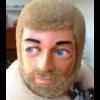Search the Community
Showing results for tags 'Corsair'.
-
Can anyone inform me about Trumpeters 1 32 kit for the Corsair F4U 1D with regards two questions : 1 : can I paint the clear engine cowling directly or do I have to prep it in some way ? Someone suggested spraying Scotchgard on the surface. 2 : how does the acetate film instrument panel get glued or attached in between the back and front panel pieces ? Theres no place to spot glue into any area...
- 3 replies
-
- Corsair
- Clear parts
-
(and 1 more)
Tagged with:
-
Hi all, I'm in the process of building an Academy 1/72 F4U-1 modified to a Fleet Air Arm Corsair Mk.II operating in the Pacific theater and I was wondering about the colour of the wheel wells. Was it the regular US interior green colour or was it Sky like the underside? - Cam
-
F4U Wheels (for Tamiya) 1:72 Eduard I've reviewed quite a few different resin wheels from Eduard, and they've never failed to impress me. The resin is always flawlessly and the details are crisp and sharp. This set provides a complete set of resin wheels for Tamiya's 1:72 Corsair. The main wheels have flat spots cast in place, while the tail wheel actually includes a complete replacement strut assembly (except for the tail hook). The latter includes photo etched details and paint masks are included for both main wheels and tail wheel. Conclusion It's curious that Eduard have waited until now to release upgraded wheels for a kit that is nearing its twenty-first birthday. Notwithstanding that, the wheels themselves are up to Eduard's usual high standard and they will make a noticeable difference to the kit. Recommended. Review sample courtesy of
-
Hello all I'd been posting this on another forum, but there doesn't seem to be much overlap of readership (or rather, of active posters at least) so I thought it might be of interest here as well. If it's redundant, let me know, and I'll just carry on there. This is the second part of project modeling the aircraft my grandfather flew in WW2. The first part, a 1/48 Tamiya F4F-4 representing his tour at Guadalcanal with VMF-121 and VMF-223 in the Fall of ’42, is posted here. This time I’m doing the ubiquitous 1/48 Tamiya F4U-1A. Neither the actual airplane nor the kit requires any introduction, so we’ll skip. A bit of history: When VMF-121 returned stateside in early 1943, Joe Foss was given command of the newly formed VMF-115. My grandfather, Jacob Stub (pronounced “stoob”), newly married, and now a captain, joined him. After a tour at Guadalcanal flying Wildcats, the Corsair was a welcome upgrade. In Eric Bergurud’s definitive history of the air war in the Pacific, “Fire In The Sky”, my grandfather commented on the Corsair (while throwing shade at both the Navy and the Hellcat): This was taken in Santa Barbara just before they shipped off. That’s Stub standing just to the right of the downward propeller blade. Foss, with the mustache and officer’s cap, is kneeling in the center. (He’s just a kid. They all are.) As they trained in California, the air war in the South Pacific was raging, with Greg Boyington’s VMF-214 in particular racking up impressive records and making headlines back home. The young men of 115 were probably expecting a brawl and more victories to with it. After all, at Guadalcanal Foss had bagged 26 planes in just a few months. In a Wildcat. My grandfather, only 4, but most of his first tour he was a wingman, which is a low scoring position. Imagine what they could get done with a serious fighter. But by the time they got back in theatre, the mighty Japanese base at Rabaul had collapsed, and the air war had moved on north and east. Professor Bergurud wrote me, “His second tour was on the Island of Emirau where he succeeded Foss as squadron commander. And like Foss, he never saw a Japanese plane during that time.” At one point, Charles Lindbergh came to Emirau as part of his famous civilian tour of the theatre to consult on adapting the Corsair to a fighter/bomber role. When I was a kid, his name came up once in front of my grandfather, who snorted and dismissed him as a ‘horse’s bottom.’ (He was generally a generous and kind person, but could get a little salty after a few. ) Foss (L), Lindbergh (R) One last thing. Here’s an excerpt from the VMF-115 war diary, dated 22 August 1944: That’s the day my mother was born (international date line aside). I imagine him sitting on his parachute in his plane on the way to or from dropping that thousand pounder on the E. Young Plantation on New Ireland, knowing that he was due to become a father any day, while my grandmother was in labor 7500 miles away. My plan is to try to build a Corsair from VMF-115 at Emirau as it would appear on the afternoon of August 22nd, 1944. To that end, I’ve collected references and a bunch of goodies. I understand that the Tamiya kit can make an excellent build out of the box, but I have a particular agenda here. I hope you’ll bare with me. Thanks for looking. -J
-
A model from 4 years ago: I really enjoy and applaud every time a manufacturer ventures beyond the usual frontiers and presents something refreshing. In this case, Special Hobby offering started nevertheless as a war bird, as you can tell for the machine-gun holes and other clues. These exact molds were first released as such. But then, in a welcome turn of inspiration, Special Hobby went for the racers to which many of this military machines were converted after the war. The decal sheet offers no less than four choices! The complete kit package is constituted by multiple resin parts nicely and cleanly cast, a small photoetched fret, a piece of printed film for the instrument panel, extensive decals as said before, two (!) vacuformed canopies and several pages of instructions. All of the items are neatly bagged and therefore protected, only to put them in one of those self-squashing, end-opening boxes. The model is not new now (2014) but it is still available for a reasonable price. The price is reasonable, sure, because the moldings show the effects of a lesser molding technology, with no locating pins, thick gates and prominent seam lines. Very little flash is present, but to get out some of the parts is not easy, and I broke two -that I promptly repaired- even when I was extra careful and, err, have been doing this for a little while. The surface detail is very good, and dry trials showed a not too precise fit, although not bad either. The masters for these parts were superb, but the technology for the fabrication of the kit traded low cost for some loss of quality. So be it. This subject is a tad outside my usual choices' envelope and is the one portrayed in the box art, but bear in mind that the contemporary machine you see on the Net is not exactly like the original machine that participated in the races in the late 40's. You get parts for both, as well as others to cater for some little differences between the other subjects in the decal sheet. Beware that in spite the abundant decals some areas still have to be painted, in this case white at the front of the nose and the vertical stabilizer tip. Always study your photos (NOT drawings) and compare, then take notes and proceed. The kit got an incorrect 9-cyl row engine, but the kit I am building has a 7-cyl row that came with later -corrected- releases, although it still has three magnetos instead of the seven needed. And so it began: As soon as I compared the "corrected" resin engine with the real thing I noticed that if it was true that the cylinder count was now correct, the cylinders themselves were not; being the shape, pushrods, configuration, all not accurate. So I ordered and Engine & Things P&W R-4360 aftermarket engine and to hell with the kit's one. Then I turned my attention to the resin bits. There are three things I don't like about resin parts: 1) When they are bad (NOT this case) 2) When they do not have a good fit (more on this) 3) When they are ridden with flash, pinholes, bubbles, etc ( again, NOT this case) 4) When the pouring blocks are not intelligently or practically connected to the parts themselves (more on that) 5) That they are made of resin (more on that too) Sorry, did I say I didn't like three things about resin parts? I guess they were more. The resin parts as said are good, well detailed, and mine had no blemishes whatsoever. While most came out obediently from their pouring blocks, the wheel wells were cast in a way that made very difficult to remove the excess resin, and this is critical because these parts are trapped between the wing halves, and of course, like every other resin cockpit and wheel well in the universe, they do not fit, being too thick (point 2). But if you sand too much, you will come through the wheel well roof , ruining the part, so WHY was the pouring block located there (point 4)? Anyway, you will have to sand too the wing parts to allow for the part to fit. As you sand the resin parts you produce an interesting amount of harmful resin dust, a health hazard. So the more you have to sand away those pouring blocks and the parts for them to fit the more crap you generate. I use a mask and do it partially under running water, but the stuff surely gets somewhere else too (point 5). The resin exhaust stubs are correct for the original racer (the two top on the sides being larger and the two lower ones shorter). The contemporary rebuilt plane has all four side stubs of the same length. The kit manufacturer omitted the ones that run underneath the fuselage, another three pairs of them, that you will have to scratch and add. The prop is too small for this variant,. Another glitch that keeps you in "step 0" fixing things and thus unable to proceed with the building itself. It is good that the overall quality of this kit is so high, and that's a strong motivation to persist. All these minor issues are not something terrible, and are relatively easily taken care off. But I have one complaint: the fuselage is split in two halves as usual vertically, but all the way up to the front; no separate cowl, no separate lip. This for me is a mistake, because you trap the engine as you join the fuselage, therefore corrections on the joints inside the cowl's lip are very difficult. A separate front lip was all that was required, and as it is, is reminiscent of bad and old kits. I was tempted to cut the cowl off and assemble it separately, or at least cut the lips off and join them apart, but decided against it in order not to mount even more corrections and tidying ups. The model shows the beautiful lines of the original now at the service of a more peaceful purpose. I liked this one, especially for the well-cast resins, the crisp and sturdy vac canopies (2!) and the superb level of surface detail; although it is not -as any other kit- without its issues. The decals cover many subjects and the graphics and register are superb, but they are really fragile and shatter easily, and there are a few wrong calls in the numbers. The decals adapt to the surface detail superbly, but are a pain in the neck to handle. There are, as you know, other good-looking racing colors and designs for this kit. As I commented, there are some differences between the restored machines and the originals, so study your references. Although restorations and rebuilds of planes are commendable and deserve high praise, as a norm I never trust them as a source for information regarding the original machines, since invariably something is off. And it is in this case as usual. You could model, of course, the contemporary machine and be done with the issue, but I am a nostalgic and enjoy digging in the past to rescue as much as possible of the golden glory and charm of the vintage subjects. As you may know, besides this Special Hobby kit, there is an Aviation Usk / Xotic-72 kit of the same plane, but I can't comment on it since I have never seen one. This model requires care and attention, and for sure some skill, but the reward for your no little efforts is a stunning racer with lots of pizzazz.
- 23 replies
-
- 35
-

-

-
I am (very slowly) building a collection of the aircraft of various Royal Navy Aces (based on the Osprey book). This model represents Vought Corsair MkII JT537/P136. 1836 NAS, HMS Victorious, Operation Iceberg May 1945. On 4th May 1945 SLt DJ Sheppard (RCN) used this aircraft to destroy a D4Y Judy. SLt DJ Sheppard was the first Royal Canadian Navy Ace of WWII. The kit is the Tamiya F4U-1D kit. Throw it in the air and it assembles itself, except it has the rather excellent MCD MkII conversion set with new cockpit sidewalls, seat with harness, CO vents and external tank. TTS uses Xtracrylix paints. Markings are made up from various Xtradecal sets. I chose this aeroplane for my collection rather than the usual T8*B in which Sheppard scored the majority of his victories as I already have a Corsair in the Blue/White roundel (Lt Col R Hay) and I wanted a Corsair with the BFP Roundel and Bars. Anyway enough of the chat... Here is P147 onboard USS Essex for comparison... And in the cabinet... Hope you like it and thanks for stopping by...
- 21 replies
-
- 38
-

-
- Pacific Fleet
- Fleet Air Arm
-
(and 1 more)
Tagged with:
-
Time to post some images of my first ever Tamiya kit, as my usual diet consists of Czech short run kits or conversions of bombers into something more civil. I used an Eduard Zoom set for the interior and a CMK set for the dropped flaps. The kit decals are nice, but as I wanted to depict a late war F4U-1D from the USS Cape Gloucester, I used a sheet from Barracudacals. I hope you like it. Peter
- 12 replies
-
- 30
-

-
Dear All, So I have made a start on my latest model. I do this for fun/relaxation, not so good at it.....but getting better. Here is the pit/office all done..........................and yes, before anyone says anything, the interior green isn't correct.....but its what I had and is good enough for my humble needs. Enjoy........comments / suggestions (good or bad) welcome as they will only make my skills improve.
-
It's my first topic here, so let me introduce myself shortly: I'm a polish scale modeler. I've built models since I was a teenager and a member of a local modeling club. When I was 18/19 years old, I had to take a break due to lack of time. Almost 10 years later, my fiance gave me a birthday gift (airplane model - Lublin r.XIII ter), to recall myself how it was to be a modeler again It should’ve been one-time adventure, but obviously it was exactly the opposite. This Corsair is the third completed one from then. Previous two models were rather training ones, I had to recall myself all the techniques and honestly, I didn’t have a nice workbench tools or paints, besides little box with pile set, scalpel, and 3-4 paints. Now, my workbench has grown, I have lots of useful tools. I chose brush painting technique, to have more fun while working. I am aware of better quality performed by using airbrush, but to be honest, I am a brush fan and I won’t give it up for sure. My goal is to achieve such high painting quality as an airbrush. Before starting to build Corsair, I thought of showing my work at some small modeling exhibitions and share on the internet forums. I didn’t use any additional, bought parts or even canopy masks. I made them all by myself, for example: masks are made of masking tape. I am satisfied with the painting - layers are really thin, they didn’t hide panel lines. My brush didn’t leave streaks, because I used flat brush and paint thinner. However, I am not happy about paint chips and scratches. I chose wrong technique and even though I tried to fix this, but my efforts were pointless, because it looked worse. I need to focus on that. The orange strip on the fuselage is painted, not used from decals. I focused on engine, some photos are attached below. You are welcome to check out my work in progress gallery on my blog. It’s in polish (english version in progress), but you can see a lot of photos there: http://minihangar.online/warsztat-corsair-f4u-4-revell-172/ http://minihangar.online/warsztat-corsair-f4u-4-revell-172-cz-2/ http://minihangar.online/warsztat-corsair-f4u-4-revell-172-cz-3/ http://minihangar.online/warsztat-corsair-f4u-4-revell-172-cz-4/ http://minihangar.online/warsztat-corsair-f4u-4-revell-172-cz-5/ http://minihangar.online/warsztat-corsair-f4u-4-revell-172-cz-6/ http://minihangar.online/warsztat-corsair-f4u-4-revell-172-final/ And gallery: In progress:
- 17 replies
-
- 26
-

-
Hi there, I'm new here and also a newbie - getting back to the hobby for the last couple of years . Our local model builder's forum, where I've posted my build reports so far have been, closed. I was looking for a new place to share my adventures in building and mainly learn from the experience of other builders. I surveyed the internet and Britmodeller came up as a good place - so here I am. My build chronicles will be detailed as much as I have time - as I'm out to share my experience with the specific kit I'm building as well as learn and get feedback on new techniques. The only challenge is that building time and writing time - are part of the same zero sum game of "spare time". So here goes ..... My next build is the Hasegawa 1/48 F4U-4 kit. Following my previous build, which lasted a while, I was looking for something simple, focused on painting and maybe weathering with limited time spent detailing. Also should be a quick build as I need to start reducing the stash.... The box, parts and instructions: It's a simple kit, a bit old, low part count, low detail level in the cockpit and engine - should be a breeze. I really like the 'Death Rattler" scheme - also because there are some nice color photos of a/c wearing that scheme. (This is for ref. only. I hope I'm not infringing on any one's copyright. I so - pls. contact me and I will remove the images) Before starting to cut parts I've looked up my stash list and - surprise ! It turns out this one is going to be a first as I have a CMK cockpit aftermarket for it - full with resin, PE and Canopy. This is certainly a twist as I've never dealt with a cockpit resin so far. Here goes the 'quick and easy' plan . Work started with some white paint (Tamiya XF-2) for the wheel hubs and back of the instrument panel dials transparency. The Instrument panel PE was covered in Flat Black, the painted transparency was glued to the back and Future drops added to the dials. After a quick dry fit I decided that the PE itself needs some solid structure to hang to so I dermel'ed the kits' instrument panel flat and glued them together. The dremel'ing is crude - as can be evident - the tool is new here and obviously used at too high of a speed. A quick dry-fit It looks like the CMK parts do not necessary fit the kit snugly so I will have to think about which part gets glued to which and in what order. Some putting is expected too. Another first - I sanded the wheels using my Dremel and then used a Platz circular cutter to cut masks for the wheel hubs, then hit the wheels with Tamiya Flat Black. A good first - but will need some (more / a lot of ) perfecting and clearly a paint touch up. Resin side panels glued, using VMS Flexy 5K CA glue, to the sides of the cockpit after dry fitting with the cockpit tub. The glue is sticky but sets slowly enough to allow adjustments. This is anther first. That's it for now. Comments are welcomed. Ran
-
Hello all! I’ve visited this forum regularly for a while now but just recently became a member. This is my first post, showing off my Tamiya 1/48 F4U-1D. Built OOB with a scratch built tool case on the wing. I finished this project a few months ago but decided to post it anyway. Enjoy!
- 11 replies
-
- 26
-

-
Revell have just released a brand new boxing of a Corsair, based on their recent F4U-1 kit but this time it's a Royal Navy Corsair Mk II (F4U-1B) with the clipped, squared off wingtips! I was quite excited to see a modern mainstream kit of a Royal Navy Corsair in 1/72, so I had to get one, as I didn't really want to modify another kit. It turned up in the UK last week, so I stuck one our trade order and it arrived yesterday and I took these pics, note the wingtips in the last pic! The decals come with instrument panels and seatbelts, so my plan is just to build the kit OOB using the decals and closing the canopy. I couldn't wait to start so it's been primed already and I'll start to paint the interior asap. There is only one marking option, which is the aircraft on the cover from HMS Colossus, July 1945. I'm hoping the thing won't have any real fit issues and it will be a nice easy fun build. thanks Mike
- 30 replies
-
- 10
-

-
Vought F4U Corsair Kagero TopDrawings One of the latest books in their TopDrawing series, this fifteen page softback is filled with line drawings and a selection of colour plates. Concentrating on the XF4U-1, F4U-1, F4U-1A and F4U-2 models each drawing is annotated, describing the differences between each model, although admittedly some of the differences, particularly when comparing drawings on the same page are difficult to this untrained eye to make out. The line drawings are very nicely done though, and show all the access panels, panel lines and other details. All the line drawings and colour plates are in 1:48, with the exception of the drawings of the engine, instrument panels and weapons, some of which are in 1:24 and 1:32 scales. The book also comes with an A3 pull out showing the upper and lower views of a F4U-1 and 1A on one side and a F4U-2 on the other. A nice addition is the small mask sheet to be used with 1:72 and 1:48 scale models. Conclusion This is a very nice, well laid out book. As with other books in the series, this one should be used along with other reference material to ensure the accuracy of your model. Review sample courtesy of
-
Vought F4U Corsair (AR14406) 1:144 AFV Club via Pocketbond The Corsair is an iconic fighter aircraft that had speed agility and an unusual look to recommend it to pilots, but its gestation was far from easy due to the highly demanding specification that required not only high speed, but great load carrying capability, combined with a low stall speed to make it suitable for carrier operations. It was given the largest engine then available in the shape of the Pratt & Whitney Double Wasp radial engine, which could drive a huge three bladed prop that was almost 14 feet across. The aircraft had an inverted gull shaped wing so that the prop didn't strike the ground on take-off or landing. It had already proved itself capable before the United States entered WWII, being the first US single-engined aircraft to exceed 400mph. Concerns about armament led to the cowling guns being deleted and three .50cal machines guns being installed in each wing, which displaced the fuel tanks into the fuselage ahead of the cockpit, giving the aircraft its distinctive set-back appearance. By 1941 it was in production and had been allocated the name Corsair; initial trials revealed an unpleasant stall characteristic that would lead to one wing dropping suddenly, which was fixed with a small root mounted stall strip. The set-back cockpit also gave poor forward visibility on landing and take-off, with oil from the engine further obscuring the view. The top cowling flaps were replaced with a fixed panel, and the landing gear struts re-tuned, but this delayed its use as a carrier borne fighter until 1944. Despite these set-backs it was used successfully as a land-based fighter, and was used in large numbers by the US Marines to good effect. A number of aces got their kills in the Corsair, which was superior to the Zero, which coupled with the pilots' experience over the poorly trained Japanese pilots made them easy targets. Because the Corsair was fast at low level it was also used for ground attack, using unguided rockets, and bombs. The Royal Navy used the Corsair from 1943, putting it into use immediately, as it was far superior to their existing options, and despite its unforgiving deck handling characteristics it found favour with pilots. After WWII it went on to serve in many conflicts, with the production line finally closing in 1953, more than 10 years after it opened. As a testament to its longevity and usefulness, some foreign operators still had Corsairs in service in the 1970s! The Kit In what seems to be an extension of their Mini aircraft series is seems AFV club are expanding their 1/144 scale kits (They previously only did P-40 kits in this scale). Inside the box there is enough plastic and decals to build two aircraft. The plastic is a dark blue colour presumably aimed for those who don't want to paint the kit. There are a selection of canopies for the different variants in the kit. All parts are well moulded, there is no visible flash, and there are fine engraved panel lines. The ribbing on the wings is not overdone for the scale. The one part cockpit and seat is put into the main fuselage and this is then closed up, the headrest part is then put on behind the cockpit. For the wings care must be taken to open up the right holes depending on the variant being modelled and the underwing armament to be used. The wings can then be glued together. The intakes and gun parts are then attached, again with care needed to select the right parts. For the front of the aircraft the modeller has the options of open, or closed cowl flaps to fit over the engine. Two different propellers are provided depending on the variant chosen. The landing gear can then be added with a choice of ground or flying position available for the tail wheel part. For under the wings a choice of rocket, bombs and fuel tanks are provided. Lastly the correct canopy for the variant being modelled is added. Markings There is a fairly comprehensive decal sheet which looks to be printed in house. The colours appear good, and everything seems to be in register. From the box you can build two of eight markings; F4U-1 VF-17, USS Bunker Hill, July 1943 F4U-1 No. 1834 Sqn, Royal Navy Fleet Air Arm, Quonset Point, July 1943 F4U-1A VMF-214, Solomon Islands, Dec 1943 F4U-1A No. 18 Sqn Royal New Zealand Air Force, Guadalcanal 1945 F4U-1C VF-85, USS Shangri-La, March 1945 F4U-1C VBF-99, USS Shangri-La, March 1945 F4U-1D VF-84, USS Bunker Hill, Feb 1945 F4U-1D VBF-88, USS Yorktown, Aug 1945 Conclusion It is good to see more kits for those modelling in the smaller scale, these are quality kits and come highly recommended. Review sample courtesy of UK Distributors for
-
Hello gentlemen, It's been a long time i didn't complete anything, but here you are, a F4U-1a Corsair, of VMF 217, in Guam, 1945. Straight from the box except for an Ultracast seat (a little gem) and decals. stars and bars from custom made masks (Thanks a bunch, Fanch ! ) Weathering a bit on the heavy side,it's supposed to render the sun bleech of the Pacific sun and the operational wear .... Hope you'll like it. Best Stef (#6) PS : Click images to enlarge.
-
Hello folks. I introduce my Corsair, this model was built last year. I used TAMIYA kit & XTRADECAL for RNZAF scheme. Best regards. Michael.
- 12 replies
-
- 33
-

-

-
...and here I go with my recently finished Corsair, from HobbyBoss. Really great model kit ( but some exaggeration in the rivets ) , and a great fit. Have added a PE set from Eduard, and some scratch for the cockpit and the tiny antennas from the nose. And for the heavy weathering I used oils. Really happy with this one Ricardo.
- 10 replies
-
- 36
-

-

-
Unless I dreamed it (which is less unlikely than it may sound!), someone recently posted a link to a really excellent webpage with thorough details of the interior colours of USN types, not just Corsairs, Avengers and Hellcats but more obscure types as well. As well as cockpit interiors, it listed cowling interior colours, wheelbay colours, etc. Unfortunately I forgot to bookmark it. Does anyone else recall following this link and could they please remind me where it is to be found (or at least the thread in which the link is found)? Thanks in advance.
-
Thanks Hub Lone Star Models is to release a 1/48th Chance Vought XF4U Corsair prototype resin conversion set for the Tamiya Birdcage kit. Source: https://www.facebook.com/groups/695711033832473/permalink/1743996942337205/ V.P.
-
- 3
-

-
- F4U
- Lone Star Models
-
(and 1 more)
Tagged with:
-
This is the Tamiya 1/48 F-4U Corsair finished in RNZAF colours from Xtradecal's RNZAF Corsair sheet. I was looking for something other than the kit scheme & I noticed this one. The pilot named it after my wife AND she's got blue eyes so the ideal Valentine's day gift. Weathered with oils, Flory washes & Mig pigments. (The kit, not the missus). Any comments, observations or criticisms welcome as always. Pete Thanks for looking.
-
Right calling this one finished and off the shelf of doom!! The Fujimi A-7 is reckoned to be the best in 1/72 but this one fought me all the way and was very very close at one stage to taking flight in the direction of the nearest landfill! a71 Maybe I had a bad moulding but one fuselage half seemed to be fractionally bigger than the other resulting in a nasty step all the way round top and bottom. That needed lots of frenzied sanding resulting in fine engraved panel lines and blade aerials vanishing in clouds of plastic and filler dust. Also the inside of the intake looked like it was shortshot - unless it was moulded to look like a SAM had gone off in there! a76 Talking of the intake, this is nice and deep unlike other A-7 kits in 1/72, but one has to make a choice. It comes in two halves and you can either glue them together first allowing the seam down the middle to be easily cleaned up and then attach them to the fuselage - where they don't quite fit, or fit each half to the fuselage and then poke about in the intake with a cocktail stick wrapped in sandpaper for half a lifetime. I opted for the latter. I had to make my own tail "sting" as the kit had an earlier style which was not correct for this aircraft. a75 Paints were Xtracrylix LGG over Citadel white, but I am giving up in the Citadel white as although it covers nicely it is just too damn fragile. I may try one of the new Humbrol acrylics next USN build. The blue is a Model Master enamel FS15102 True Blue which I believe is the correct FS for this aircraft. The enamel sprayed like a dream thinned with white spirit and in an ideal world I would junk all my acrylics and replace them with these but for the almighty stink caused by cleaning up the airbrush. a77 The tips of the ejector racks were brush painted and again the MM enamel went on beautifully with no brush marks. The rather nice markings for VA-303 (which I think is a second line squadron) came from an old Microscale sheet. As I am finding out these old sheets annoyingly don't seem to include the marking on the wing tops and because of the highly stylised "ND" used by this squadron I had to scratch around for an alternative. There are other errors on the sheet like the "300" on the nose should be in an italic style font etc. I ended up buying another Microscale sheet and used a tail marking from another scheme with more or less the correct size of "ND". The size and position of the "300" on the wing is bit an educated guess as I could find no clear pics showing this. a73 Hope you like!!!! a72 Pat
- 20 replies
-
- 28
-

-
Chance Vought F4U-1D Corsair detail Sets Eduard 1:32 The Tamiya 1:32 Corsair F4U-1D is a fantastic model straight out of the box as are all of this series of 1:32 kits, but there are always more ways to gild the lily. This is Eduard come in with their range of update sets for it, four more in fact if you include the zoom and mask sets, on top of the ones already released. Each set is held in the usual poly sleeve packaging with a card insert to prevent damage, and the instructions still leave a lot to be desired. Typically some of the kit details need to be removed before the brass parts can be added. Interior Zoom Set (33181) - Contained on a single of relief etched brass, it being pre-painted but no longer self adhesive. There are a large number of instrument boxes fitted around the cockpit, on the side consoles; coaming and side walls onto which the pre-painted faces are attached. The instrument panels are also pre-painted complete with the instrument faces on the backplate. A little dab of aqua clear will give them the appearance of glass fronts. There are also parts for complete replacement throttle quadrant and gear leaver housing. Exterior (32412) - This single sheet set contains some very nice additional detail for the exterior and open areas of the kit. There are quite a few parts dedicated to the interior of the tailwheel bay, especially on the mounting bulkhead which has new mounting fixtures and fittings for the tail oleo, whilst the foreward bulkhead is fitted with new fittings which include the rudder cable arm and mounting bracket. The tailwheel bay doors are fitted with new hinges panels and attachment links. The main wheel bays also get a dose of additional detail with the fitting of new panels around the bay walls and roof along with additional cabling and pipe work. If you’re building the model with wings folded then you have the option of adding new end plates to the flaps and ailerons along with replacement brackets and web pieces. The wing fold areas have a host of new hoses and pipework fitted which will really make the areas look not only more accurate but busy. The kits bombs get new arming vanes for both the nose and tail positions as well as new bomb lugs, but in this scale they need to be thicker, so it may be best to keep with the kit items. The rockets are fitted with the electrical cable that attaches to the rear of the rocket, and can be left hanging if desired, to show that they’re not armed yet. Seatbelts (33180) - This small single sheet of etched steel contains the pre-painted seatbelts, and while they are quite simple to use, they do look really nice with the stitching picked out and some shading already added. They may take a little fiddling to make look the part, as they’re not as giving as cloth belts, but once glued in place, they will certainly stand out. Masks (JX207) - To complement the sets mentioned above, Eduard have also released a set of paint masks for the F4U-1D, which helps masking the clear areas a whole lot easier. Conclusion As with most of Eduards releases there are questions as to why some sets are so comprehensive yet still missing vital parts that are held back to make up other smaller sets. I suppose it does give the modeller more options on how much detail they wish to add, but is still quite annoying. The quality of these sets is superb, and will certainly help to the making of a super detailed model. Review samples courtesy of
-
Hi everyone! I'm currently building a 1/72 Corsair by Tamiya & applying all paint with the hairy stick. Will be doing my -1D in the tri colour scheme like above. Tailplanes joined onto both halves Interior painted interior green (Vallejo 'Flat Yellow' & 'Flat Green' in a 2:1 ratio) & sidewall detail painted black. Seat & rear bulkhead painted Rudder pedals have been drybrushed with aluminium paint to simulate chipping. Cockpit side & instrument panels have been glued together & painted. The reason the control stick looks wonky is because I accidentally snapped the thin rear section & accidentally cut off the handle in my rushed attempt to get it off. Glued them both back on fortunately. Gunsight painted Everything would receive a few more coats of paint & some weathering before they can be called done. The instrument panel & sidewall detail would get picked out before assembly [obviously].
- 7 replies
-
- 4
-

-
- Corsair
- Brushpaint
-
(and 1 more)
Tagged with:
-
Good day all. I'm planning on doing a Corsair diorama depicting a relatively weathered Corsair on an island. I have this Revell kit: After about a day of research on general info, I still have unanswered questions. 1. The kit has the following two options: a) Pappy Boyington's VMF-214 Corsair at Vella Lavella, Solomon Islands. As far as I could find out, Major Gregory Boyington didn't actually fly this plane, ever, as the photos with him in it were for publicity only. And b), a VF-17 Navy Corsair. My objective being to depict a weathered Corsair on an island, which one of the two would be the most appropriate? Seeing as "Boyington's Corsair" wasn't flown by him, was the publicity additions (kill markings, lulubelle/lucybelle) removed after the op, or did someone (other that Boyington) actually fly the Corsair like this? As for the Navy option, there's a photo of a Navy VF-17 Corsair on Bougainville at this link http://www.mission4today.com/index.php?name=ForumsPro&file=viewtopic&t=14428&start=436&finish=15&printertopic=1 It's about 3/4 down the web page. Why would a Navy Corsair land on an island? Or were they based there? I thought all Navy planes were based on aircraft carriers (please excuse my lack of knowledge on the subject). And would that then be realistic to depict a Navy Corsair on an island diorama? 2. The kit includes the US insignia with red outlinings. For some reason I doubt it it's correct. According to the image below, both these subjects post date the red barred insignia. Also, I see a lot of Corsair model pictures with the "normal" blue barred US insignia. Did Revell get this wrong? 3. Cockpit colours (and general primer colours). Seems like this is a tricky one. According to http://www.ipmsstockholm.org/magazine/2004/05/stuff_eng_interior_colours_us_part3.htm : "Vought F4U Corsair Sorting out the interior colours of the Corsair is particularly tricky. For the F4U-1 Birdcage Corsairs, photos taken at the time show the cockpits being a very dark colour, most probably black. Analysis of some crashed examples of F4U-1s indicates black, while the factory Erection & Maintenance Instructions called for Dull Dark Green. As mentioned before, early production Corsairs had their interior surfaces in areas other than the cockpit covered with Salmon primer. This colour mixture was used relatively long into Corsair production. It would seem that all F4U-1s and a number of early F4U-1As were finished this way. Somewhere during the production of F4U-1A model Vought discontinued the use of Salmon primers and switched to Zinc Chromate Yellow with cockpits in Interior Green." Did anyone get more concrete info on this? Seems like the model I want to depict could be either Salmon or Zinc Chromate Yellow primed. Although I have more questions, these are the ones that prevent me from starting this build. Any opinions would be appreciated. Cheers Jimmy


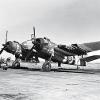


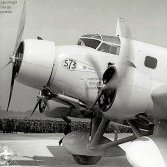
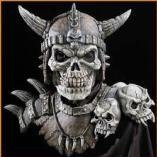

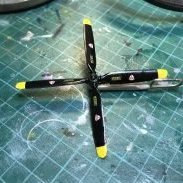
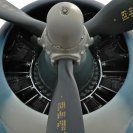


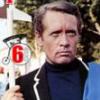



.thumb.jpg.0cb281983c298f55509ab7d9a06994bd.jpg)
